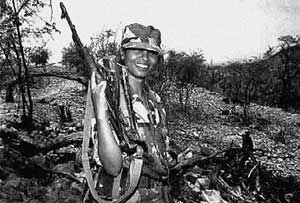
Let’s see how well you know your military history. Give the date and place of this comminique:
“Our Victorious Forces Liberate Zalambessa!!
Our victorious and heroic air and ground forces have liberated the town of Zalambessa after completely annihilating the enemy army which was on the verge of collapse yesterday. Our valiant forces raised the flag over Zalambessa town at midnight. Yesterday, the Irob and Egala areas were already liberated.”
It sounds like something from the late 19th or early 20th century, from the age of the great wars between nation-states. But the comminique was actually issued by the Ethiopian Army on May 25, 2000. Two years ago. I guess nobody told the Ethiopians that the age of Nationalism was over. In some parts of the world, the great days of nation-building are right now, the great wars are right now, and the whole “age of heroes” thing is going strong.
When you live in what they call the developed world — meaning Fresno, where only real-estate developers count — you forget there’s places where life is still going strong. Like the Horn of Africa. The countries around the Horn are like an honor roll for blood’n’guts: Somalia, Eritrea, Djibouti — and right across the water, another crazyhouse I’ll write up one of these days: Yemen.
The Horn gives you hope that the world isn’t totally dulled-out yet. I may have to live like an ant in a suit, but in the Horn people still live wild. Remember Somalia?
In the Horn, war is normal and comes all sizes from family stabbings, to clan vs. clan war like Somalia, to total war between nation-states.
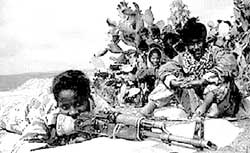 An Eritrean Boy Scout
An Eritrean Boy ScoutWhich is what the Eritrea-Ethiopia war is. This is definitely not your typical African bush war — the kind you see in Sierra Leone or Liberia, with gangs sneaking around attacking villages, avoiding combat, carrying nothing bigger than your basic irregular-warfare kit of AK’s and RPG’s, specializing in rape and mutilation.
The Ethiopian-Eritrean war is more like the Franco-Prussian War, or even the Western Front in 1914. These are two countries fully supplied with the best of mid-20th-c. Soviet weaponry, and smart enough to keep it running. And use it. And boy, have they used it! They’ve had Verduns, Stalingrads, Marnes down there — and nobody even notices!
Eritrea is like Prussia: a tiny state of hard people who’ll take on anybody. The Eritreans rebuilt an entire railroad with their bare hands. Imagine what that must’ve looked like: hundreds of thousands of ordinary people, whole families, digging rock and hammering track for no pay, out there in some of the hottest, driest, nastiest landscape in the world. And it wasn’t because the authorities terrorized them into it: it was for the good of the nation. Think what kind of soldiers those people must be! If there were a few more Eritreans, they’d probably march across the whole continent: “Greater Eritrea (formerly known as ‘Africa’).”
But there are only 3.5 million Eritreans. Which means they can’t afford to spend soldiers the way Ethiopia, with a population of 60 million, can. So the Eritreans specialize in defensive fighting, especially trench warfare. Ethiopia, with the big population, has a reputation for spending its soldiers’ lives a little more recklessly. The Eritreans even accused Ethiopia of using “human-wave tactics” after the Ethiopians broke the supposedly impregnable Eritrean trenchlines a couple of years ago.
The Ethiopians deny the “human-wave” charge, and say they simply understand mobile warfare better than the Eritreans do. After their big breakthrough in 2000, one of the Ethiopian generals said, “The Eritreans only know how to fight in trenches!” The Ethiopians say they smashed the Eritrean trench network in classic manner: flanking the strongpoints on both sides, then attacking from front and rear at once.
If Eritrea is like an African Prussia, Ethiopia…well, Ethiopia is just plain weird. The Ahmaric people who live in the highlands and ran the place till recently, have their own version of racism. They consider themselves the only really white people in the world. The way they see it, “white” Europeans are red, and other Africans — the ones they sold as slaves (slavery wasn’t outlawed in Ethiopia till 1928) — are black.
The Ethiopians picked up Coptic Christianity early and they have a long and bloody history of fighting off jihads launched by a dozen of the Islamic kingdoms around them. When you start researching Ethiopian history you come across these really cool wall murals they did of Ethiopian knights with eyes like eggs, stabbing Arabs and Bantu and Somalis at their feet.
The Ethiopians’ greatest day came in 1896, at the battle of Adowa, where the Abyssinian Emperor Menelik II slaughtered an Italian Army. The news that Africans had beaten a European colonial army blew everybody away, Europeans and Africans both.

Better than Fresno
Adowa meant that Ethiopia was able to avoid outright colonization — until 1935, when Mussolini, the Rodney Dangerfield of fascism, tried to avenge Italian honor — assuming there is such a thing. He sent in his Nazi-wannabe troops: tanks against spears, biplanes dispensing chlorine gas vs. cavalry. And the Italians STILL took a while to win.
You know, the Italians really deserve their reputation for being cowards — whereas, if you ask me, the French get a bad rap. The French fought like tigers in WW I, lost 1.5 million men, took the worst the Germans gave out and held on to win. The Brits like to sneer at the French, but if England had had a long land border with Germany in 1914 or 1939, how long do you think the war would’ve lasted? And the same thing holds for the nineteenth century: if Wellington had had to meet Napoleon one-on-one, without Russian or Prussian help, just British troops vs. French…are you kidding me? Wellington would’ve been the Duke of some prison cell in Paris. The French deserve more respect.
But the Italians don’t. It took them years to beat the Ethiopians, and when Addis Abeba finally fell, Haile Selassie took off on a world tour that included Jamaica. You know how all that Rasta stuff got started? Because some Jamaicans were so excited by the idea of a black emperor that they decided he was god. So those Rasta images — that lion with a sword — that’s Ethiopian military insignia. Pretty cool, huh? Kinda funny, too, when you think of Selassie, a black slave owner, waving to the Jamaican crowds wondering what these people had to do with him.
Selassie came back to power in ’45 and went back to his good old bloody ways. One of his dumber moves was trying to annex Eritrea in 1961. That turned into a long losing war — one of dozens of wars, plagues and famines going on around Ethiopia. The emperor finally fled in 1974, when the usual suspects — ambitious army officers mixed up with Marxist high-school teachers — decided he had to go. They figured they could do better at putting out the fires than some pint-size wrinkly king.
They were wrong. They inherited all the rebellions and had no more luck putting them down — not even with the help of the 15,000 Cubans Castro sent to help out. The rebel group that finally took power in Ethiopia was the TPLF. Their best friends were the EPLF, which took over Eritrea. These groups were bestest pals. They even helped each other against the old Marxist regime, sharing weapons, planning and intelligence. In 1991, when the TPLF marched into Addis Abeba and the EPLF assumed power in Asmara, they showered each other with love-notes and promises of eternal alliance.
But it’s hard to stay friends when you’re running African countries. The TPLF leaders got a lot of flak inside Ethiopia for being the EPLF’s lapdogs. The EPLF were so high on their own victory speeches they started picking fights with everybody — and when they stupidly picked a fight with Ethiopia over currency, the TPLF group running Ethiopia jumped at the chance to show the home folks they weren’t no lapdogs to those snotty Eritreans.
So the two countries decided to fight over the crummiest, most worthless land around: a triangle of scrub around the town of Badme, where the border was hard to define. Both sides had plenty of manpower, even after fifteen years of border wars, because the Horn of Africa has some of the highest birthrates in the world. A whole new generation of kids was ready for call-up. The Eritrean leader, Issaias, said he was glad that the new “Coca-Cola generation” of Eritreans were going to get the chance to see what his generation had gone through. (Issaias has an AK round imbedded in his skull, which may explain this comment.)
While the US fumbled around doing its usual “Now can’t y’all shake hands and be friends?” routine, the Ethiopians went on a shopping spree: MiGs, antitank missiles, radar systems — if it was on sale and came in olive drab, they bought it. The Eritreans, with less capital, went for construction, making their “Skyline Trenches” even deeper, stronger, more impregnable.
In February 1998 the Ethiopians made their move, attacking the “skyline trench” at Badme, the crummy desert hamlet they were supposedly fighting over. The Ethiopians used tanks the way they’re supposed to be used: as mobile weapons, not the boring dug-in artillery you see so often these days. The T-55s went slamming across the valley at full speed, right at the Eritrean lines. The Eritreans reacted with massed artillery barrages, emptying every tube they had into the attackers. It was a classic battle: one side fighting WW I trench-warfare style, the other using a classic WW II blitzkrieg approach.
And it developed in classic lines: pincer and counter-pincer movement. The Eritreans made the fatal mistake of coming out of their trenches to surround Ethiopian penetrations. They were enveloped in turn by the second and third waves of the Ethiopian advance. They were blown to pieces.
Another classic doctrine soon came into play: when discipline and morale are roughly equal, numbers will tell. And the Ethiopians had the numbers. The Eritreans couldn’t go on trading casualties and fell back to their second lines. When the Ethiopians attacked those lines, the Eritreans were ready: 15,000 Ethiopian troops were killed in less than one day. Even more impressive, the Eritreans knocked out 40 to 50 Ethiopian tanks. That’s not easy, when both tanks and anti-tank weapons are Soviet, because the Soviets were better at tanks than anti-tank weapons.
By 2000, Ethiopia had made its point, pushed back the border, and forced Eritrea to back off. They let it go to stalemate and brought in the UN, which is still yammering away uselessly about a permanent solution.
In a weird way, everybody won in this war. Eritrea is now the tightest-knit country in Africa, pretty impressive when you realize there wasn’t “Eritrea” till recently. There’s no such thing as an “Eritrean” ethnic group; it’s just an old colonial border. But now, everybody inside that border is an Eritrean nationalist to the bone. And Ethiopia, a crazy multiethnic African Bosnia, is suddenly full of national pride.
Western press goes on and on about the dead and the suffering. But this war was a sign of life. It’s like those tectonic plates they talk about: in some parts of the world, the planet’s still young. Volcanoes are spouting, there are earthquakes all the time, whole continents are moving. In other places the crust is already dead and cooled, and nothing ever happens. The Horn of Africa is like the tectonic hotspot of the whole damn planet. Part of that is that yeah, people die. But people die in Denmark and Fresno too. They just die of boredom instead of bullets.
This article was published in issue #151 of The eXile, Octorber 2002.
Read more: eXile Classic, exile issue 151, the war nerd, Gary Brecher, eXile Classic, The War Nerd


Got something to say to us? Then send us a letter.
Want us to stick around? Donate to The eXiled.
Twitter twerps can follow us at twitter.com/exiledonline







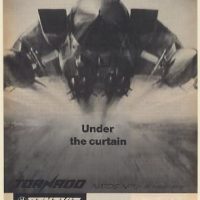
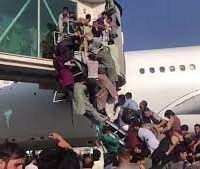


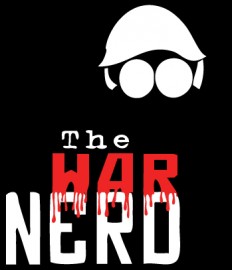



5 Comments
Add your own1. Jeff | May 19th, 2009 at 12:26 pm
An ethnic Oromo recently told me that as the Amhara were conquering Oromo lands around Addis Ababa in the late nineteenth century, the Oromo were getting their asses kicked by the Abyssinians, who had muskets and were fighting in that civil war line-up-and-shoot formations. The Oromo didn’t know what to do, what with no guns and all. Eventually, they got horsemen to wear “armor” of thick leaves and charge the Ethiopian formations, chucking beehives at the massed enemy. Can this be true?
2. Yapi yapo | January 31st, 2010 at 9:18 pm
This article is too hilarious! Well written
3. Dire | April 24th, 2011 at 1:16 pm
This is a extremely biased poorly wriiten article trying to portray Ethiopia as poorly organized and eritrea as some kind of sparta. Well ask what happened during operation Sunset launched by Ethiopia that resulted in 19,000 dead eritreans in 72 hours.
4. Mike | February 20th, 2012 at 1:14 pm
This article is retarded. Full of lies. Although Haileselasse fled in 1935-6 like the coward he was, he didnt flee in 1974. He was killed by the derg. And yes Eritrea isn’t and ethnic group just like Ethiopia isnt an ethnic group. Eritrea is a country that has ethinc groups. And Eritrea isn’t a recent thing. It been around for centuries. Infact it should have been the first nation in africa to gain independence in the 1940’s but the US and UK did everything in their power to prevent this from happening. And Dire…you are very retarded. “19,000 dead eritreans in 72 hours.”??? Eritrea lost 19,000 people during the whole 2 year war. So unless in 2 years = 72 hours in your fantasy world, your comment doesnt make sense. Ethiopia lost almost 15,000 during their failed sunset operation, cause Eritrea only lost up to 3000 soldiers. In total ethiopia lost 123,000 soldiers compared to eritreas 19,000. So even though there are no winners cause bothe sides lost people…ethiopia obviously had better cards in terms of warfare but lost the game. Other wise this article is somewhat accurate.
5. Beyene | November 22nd, 2012 at 11:06 pm
I have go through the material in depth. It is really a new history created in the mind of the writer. It may mislead innocent readers who are far away from the war front. I hope every body can understand war is not a marriage ceremony that consumes money and labor. It consumes life and money. Therefore, it is clear there was a loss of life from the two group fighters. But the writer was writing the condition by creating his own dream.
Leave a Comment
(Open to all. Comments can and will be censored at whim and without warning.)
Subscribe to the comments via RSS Feed